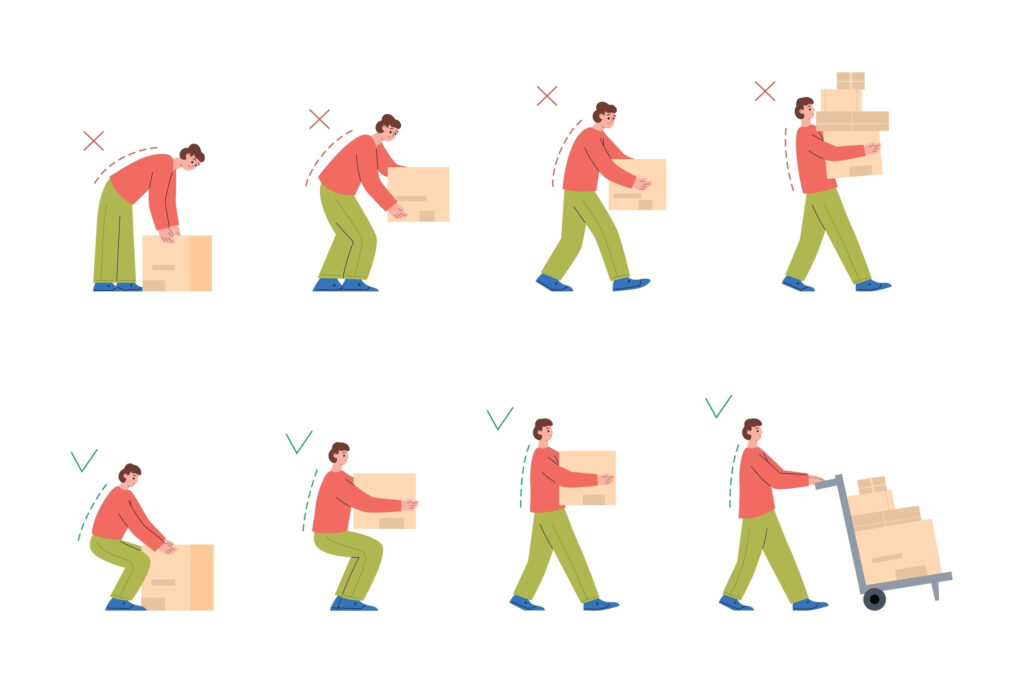
The Workplace Safety and Health (WSH) Council has published a Code of Practice on Safe Lifting Operations in the Workplace to help prevent injuries from manual lifting or carrying.
Workers should follow these guidelines when carrying or lifting objects:
- Assess the load: Determine the weight, size, and shape of the object you will be carrying or lifting. If the object is too heavy or awkward, get help or use a mechanical aid, such as a dolly or forklift.
- Keep the load close to your body: Hold the object close to your body, as close to your center of gravity as possible. This will help you maintain balance and control.
- Use your leg muscles: Bend your knees and keep your back straight and as vertical as possible when lifting. Avoid bending at the waist or twisting your body.
- Hold the load securely: Use a firm grip on the object you are carrying or lifting, and keep it balanced.
- Take short breaks: If you need to carry or lift a heavy object for an extended period of time, take frequent breaks to rest and stretch.
- Wear proper clothing and footwear: Wear clothing and footwear that allow you to move freely and maintain your balance, such as shoes with non-slip soles.
It’s important to follow these guidelines to help prevent back injuries, which are one of the most common injuries resulting from improper lifting techniques.